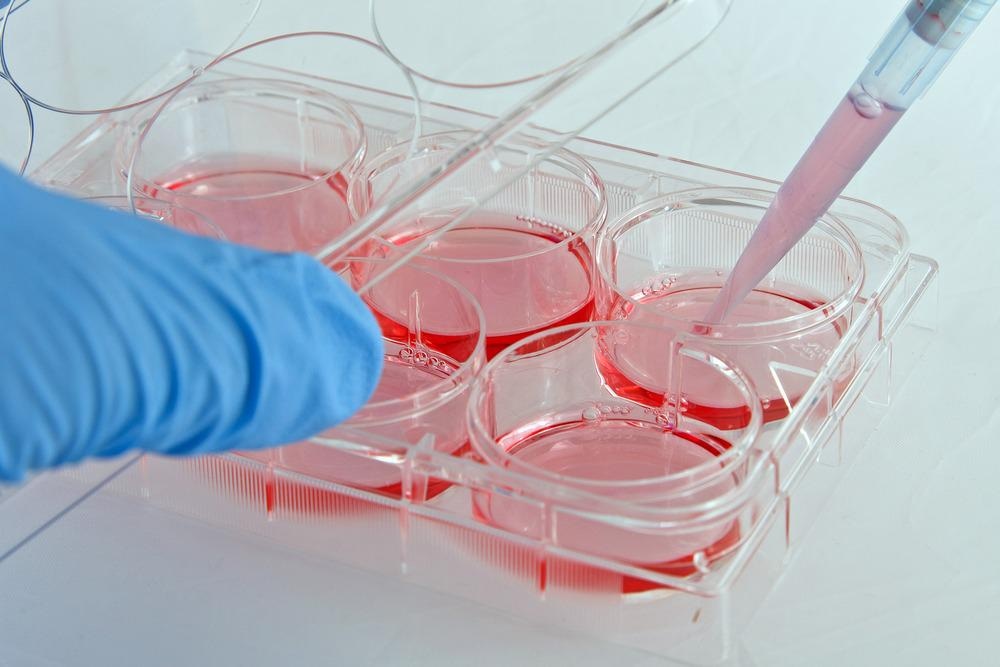Thin films are sheets of material with a thickness of fewer than 50 nanometers and have received considerable attention in recent years due to their unique qualities and applications.

Image Credit Jens Goepfert/Shutterstock.com
Due to factors at the microscopic level, thin films have very different mechanical properties compared to larger forms of the same materials. For example, films of noble metals like platinum are transparent in visible light but not in ultraviolet light because the bound electron in these metals triggers different optical responses.
Recently, gold thin films have garnered interest from businesses and researchers, often for optical applications due to their unique performance. Furthermore, gold thin films are attractive because of their flexibility, malleability, strength, inertness to oxidation, and ability to conduct electricity and thermal energy. Gold is also an ideal material in thin films due to its ability to tolerate significant changes in temperature.
Gold thin films are typically made via physical vapor deposition, a standard method for thin film production. Other production efforts include molecular beam epitaxy (MBE) and cluster systensm which have been used to create customized qualities.
Current Applications of Gold Thin Films
Even though their technology is still emerging, gold thin films are currently used in several industrial applications.
In sensors and microarrays, gold thin films are used to preserve surface reactivity to fabricate self-assembled monolayers for sensor devices. These films are also used to attach molecule-sized bioactive probes and can be utilized for signal amplification in optical and electrochemical sensors.
Gold thin films reduce surface roughness for scanning probe microscopy applications, and their highly smooth quality makes them excellent mirrors in optical instruments. The electron densities of gold thin films are also well suited to surface plasmon resonance applications.
Regarding biomedical applications, films made of pure gold help to prevent contamination in sensitive cell cultures.
An Emerging Focus - Nanoporous Gold
One up-and-coming area of research is focused on nanoporous gold thin films. This nanotechnology offers high electrical conductivity, specific surface area, flexibility, and malleability. While basic gold films can be fairly dense, nanoporous films are full of nanometer-scale gaps formed by interconnected strands. Researchers have uncovered ways to tune the sizes of these tiny gaps in order to unlock a range of different service and mechanical qualities.
Scientists working with these films have been studying the different electrodeposition techniques used to make them.
Studies have shown that specific chemical and physical interactions between the deposited material and a substrate are necessary to form highly organized nanoporous films. These precise production methods could lead to the development of many new applications, such as better drug delivery methods that can deliver a specific dose to a precise location inside the body.
Study teams are looking at other ways in which deposition methods can create different physical qualities in nanoporous gold thin films. State-of-the-art electrodeposition techniques are being used to precisely control nanostructures within these films that create a higher number of grain boundaries, which would help improve catalytic performance.
An Emerging Focus - Gold Thin Films for LSPR Biosensors
The surface-charge phenomenon known as surface plasmon resonance (SPR) significantly boosts the sensitivity of substrates reacting with a target material in biosensor applications. When light is focused on specific metal nanoparticles, it produces a localized surface plasmon resonance (LSPR) that triggers the creation of both a strong electric field and stronger interactions between light and fluorescent nanomaterials.
Simply put, these phenomena act as a signal boost of biological systems that can be detected by spectroscopy and other sensor techniques.
In a new study, researchers found the unique qualities of gold thin films are particularly promising for LSPR-based spectroscopy. To reach their conclusion, the researchers first had to develop a new gold thin film fabrication process to create a desired nanostructure. When looking at the optical response of the thin films they made, the study team found that shrinking the size of nano gaps leads to desirable increases in electromagnetic enhancement.
These results may indicate that gold thin films could significantly enhance LSPR-based spectroscopy, as well as other sensor applications.
Continue reading: Enhancing Cancer Radiotherapy with Ultrathin Gold Nanowires.
References and Further Reading
SK, P., (2016) Observation of Optical Properties of Gold Thin Films Using Spectroscopic Ellipsometry. Journal of Material Science & Engineering, 05(06). Available at: https://www.hilarispublisher.com/open-access/observation-of-optical-properties-of-gold-thin-films-using-spectroscopicellipsometry-2169-0022-1000303.pdf
Platypus Technologies. (2021) Gold Thin Films | Quality | Supplier. [online] Available at: https://www.platypustech.com/gold-thin-films
Sondhi, P. and J. Stine, K., (2020) Electrodeposition of Nanoporous Gold Thin Films. Nanofibers - Synthesis, Properties and Applications,. Available at: https://www.intechopen.com/chapters/74289
Handoyo, T. and Kondoh, J., (2020) Development of gold thin-film for optical-based biosensor. INTERNATIONAL CONFERENCE ON EMERGING APPLICATIONS IN MATERIAL SCIENCE AND TECHNOLOGY: ICEAMST 2020,. Available at: https://doi.org/10.1063/5.0006687
Disclaimer: The views expressed here are those of the author expressed in their private capacity and do not necessarily represent the views of AZoM.com Limited T/A AZoNetwork the owner and operator of this website. This disclaimer forms part of the Terms and conditions of use of this website.